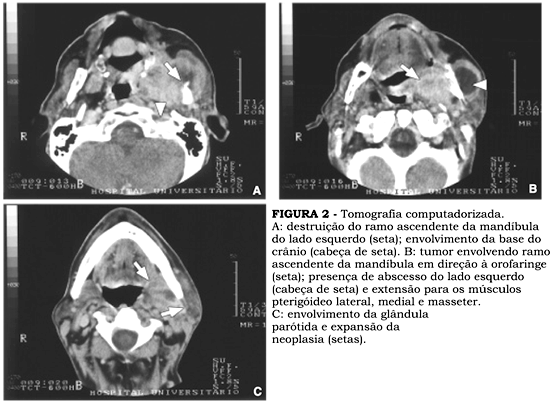The purpose of this work was to compare radiographic findings, such as localization and extension of tumors toward the bone and soft tissues, in panoramic radiography and computed tomography (CT). Four radiologists assessed the radiographic findings of 48 patients with the histopathological diagnosis of squamous cell carcinoma in different sites of the maxillofacial region. Panoramic radiographs and computed tomographs were obtained at the University of Iowa Hospitals and Clinics, at FUNDECTO - USP and at the hospital of the University of São Paulo (USP). We observed a considerable limitation of the panoramic radiography in determining the localization and extension of tumors, since it revealed unclear delimitations. Regarding CT, better results were obtained: it was possible to observe the invasion of the tumor toward adjacent soft tissues, as well as the extension of bone destruction and the depth of the lesion, which were confirmed by surgical findings. We concluded that computed tomography demonstrated to be a sensitive radiographic technique for the detection of the involvement of bone and soft tissues, contributing for a more precise diagnosis, surgical planning and intervention. On the other hand, panoramic radiography was considered less sensitive and less efficient than CT, since it shows only unclear borders of the lesions and is not able to assess the involvement of soft tissues.
Carcinoma; squamous cell; Radiography; panoramic; Tomography; X-ray computed




